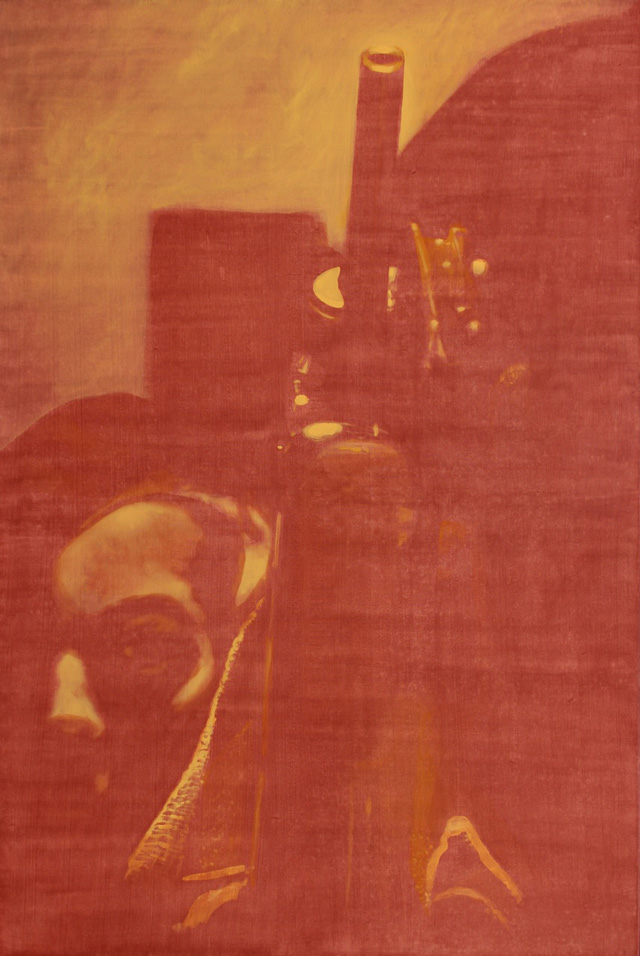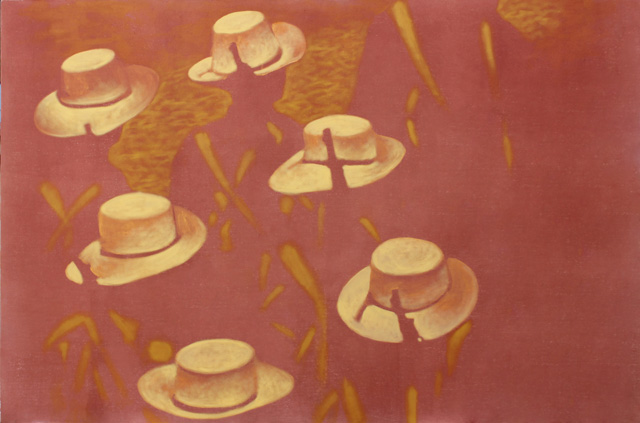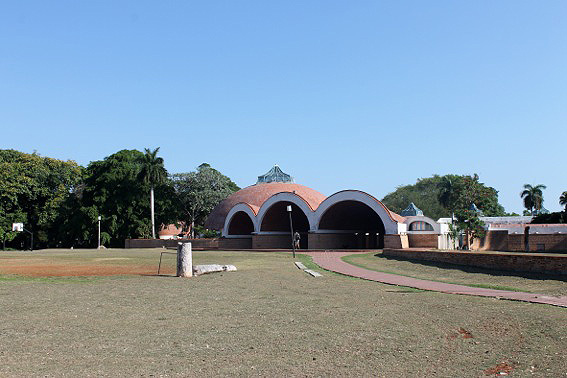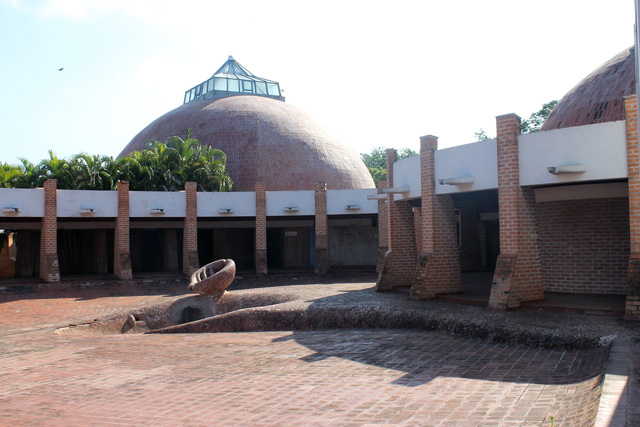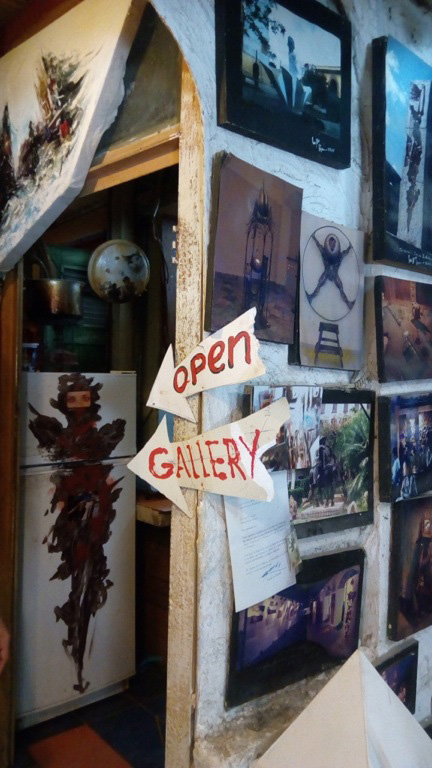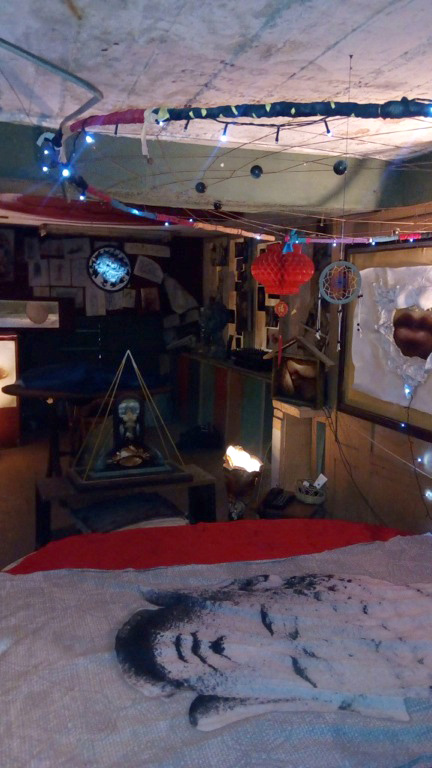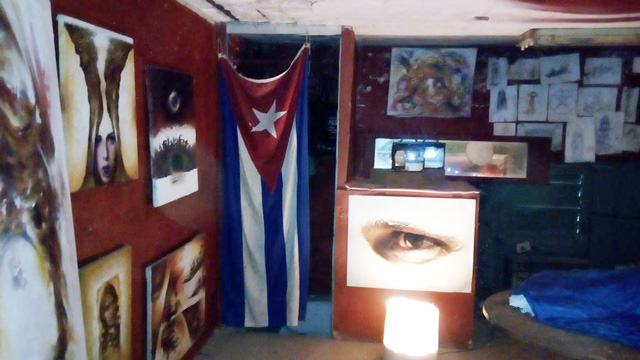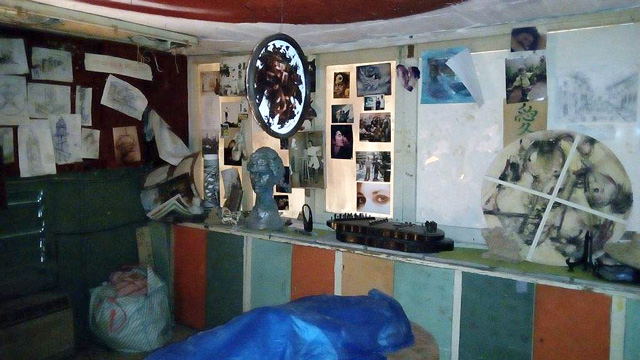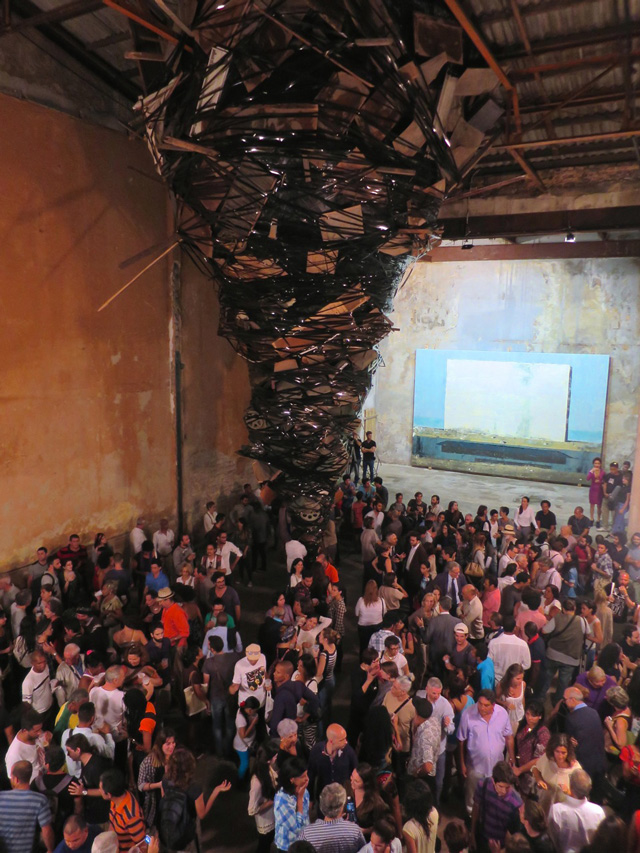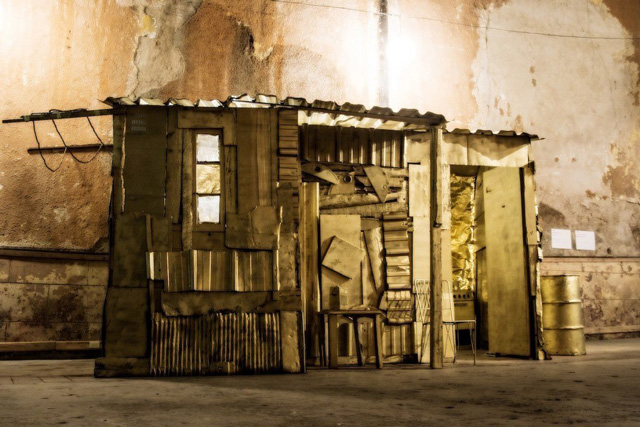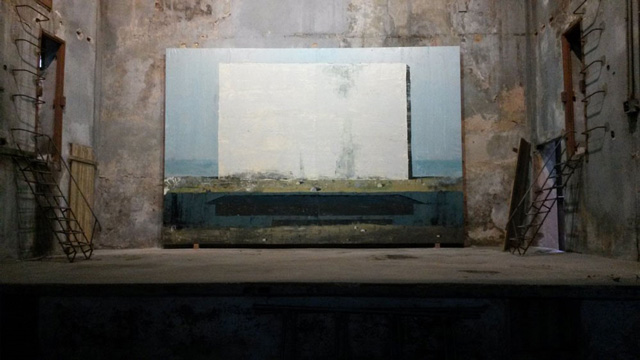

by JILL SPALDING
Like the peso – the one for locals worth 20 cents, the one for tourists five times that – everything in Cuba manifests a through-the-looking-glass ambivalence. At a polite distance from the local mercados that fly the bright but pitted colours of seasonal home-grown fruits and vegetables, high-end markets flash a year-round spread of frozen and wrapped goods, plentiful, pricey and shipped in from the world’s farther corners. The compliant are libre, while the dissenters, rendered as invisible as the nether-half of an iceberg, are in jail. Homosexuality, denied by law, is tolerated by custom, since Raúl Castro’s daughter identifies as lesbian and another high-ranking member of the island’s ruling family is loudly rumoured to be, covertly, gay. The sea is an inviting tile-blue, but there is not a sailboat, fishing boat, or inflatable raft on the horizon. Cuba, in this context, is a prison.
In another context, Cuba is a laboratory, a quasi-successful experiment in the education of man and a living example of Thomas Jefferson’s realistic “coolness, forecast, and capacity”, so admired by Abraham Lincoln, to posit in the Declaration of Independence the “abstract truth” that all men are created equal. While technically, male and female, black, white and every gradient between can claim access to full healthcare, have free recourse to higher learning, and hold any work position, the abstraction kicks in on the island’s east side, which is predominantly black and employed in menial labour. Jarringly, if subtly, the significant divider is neither colour nor class, but earning power. While doctors, lawyers and those in the tourist industry live comfortably enough, in a surreal inversion the state’s plutocrats are the artists. Leaping over the $22 median monthly worker wage, even the churned-out watercolours hawked as tourist souvenirs from a harbour warehouse sell for $40 to $80, and the art lining my hotel lobby was priced between $500 and $4,000 – a small fortune even discounting the 40% siphoned off to the state. Currently, the art school graduate with show potential sells a work locally in the range of $500 to $8,000, and, in an arrangement sure to follow on the easing of the remaining restrictions, will be tapping into auction and gallery sales overseas that already exceed $200,000.
Privilege across the board seems linked to money, star-power, or connections that bring in the much needed tourist dollar. Swimming pools, for example, are illegal in Cuba, but I was told of at least five, all fronded from view. The only one acknowledged, at the villa-hugging embassy row in the suburb of Cubanacán, belongs to Cuban-born, Venezuela-raised, Ella Fontanals-Cisneros. Relocated to Miami, she became a heroine of sorts after ploughing a large portion of an $80m divorce payoff from her billionaire husband Oswaldo Cisneros, not into the pet grooming / nails / flowers / entertaining / travel and house expenses he had thought it for, but into the Cisneros Fontanals Art Foundation . Known as CIFO, this splendid free-to-the-public exhibition space, in a splendid warehouse conversion by local architect Rene Gonzalez, presents museum-worthy shows curated around her Latin-inflected, 2,650 piece art collection that have been focusing in - as with this year’s Gustavo Perez Monzon retrospective - on long-emerged Cuban artists.
In the most critical context – the one drawing a tsunami of investors, developers, advisers and collectors – Cuba is a chrysalis, a mottled caterpillar working its way urgently into a radiant butterfly. The gestation period (with even Donald Trump’s loudest detractors believing that he, like Hillary Clinton, will lift the crippling trade embargo) is being estimated at nine to 18 months – a nanosecond in Castro time, given that the regime has outlasted 10 presidents.
The resulting mood – belying the decomposing infrastructure and the gagging level of carcinogens that spew from the open flames of Havana’s chimney industry, the exhaust pipes of glamorous 50s Chevys revived with Soviet engines, and the Hungarian-built buses – is compulsively cheerful. You can hear the drumbeat: “The Americans are coming, the Americans are coming!” The breakfast spread at my three-star Hotel Meliá Cohiba – of a breadth and quality that verged on propaganda – gathered every US agenda. I encountered retailers looking for opportunities to manufacture locally, hoteliers exploring state-abetted five-star options in the city’s old town, engineers invited to transform the rusting, two-season, polluting sugar industry into a sustainable, green, year-round supplier. All reported good meetings with officialdom, and green-lighted projects that awaited open trade.
My own agenda, being all things art, was all go, given that the Castro revolution had ever placed its trust in the persuasive power of culture. As the story is told, Fidel was enjoying a round of golf with Che Guevera on the island’s toniest course, when he had a vision; at his feet would arise, from the ashes of colonialism, a world-class arts university. And so, with élan, albeit as yet uncompleted, it has. While the two Italian architects entrusted with the music and performing arts buildings can be said to have done an adequate job, the local architect did the visual arts proud. Six brightly lit spacious studios, presenting as glass-nippled, breast-shaped domes, branch off a walkway shaped explicitly like labia – a feature the students delight in pointing out. Shortened in the lexicon from the Instituto Superior de Arte to ISA, the acronym waves like the national flag over this incubator of Cuba’s next generation of world-class artists, thereby constituting a starting point. Visit on any weekday (having made an appointment) and you’ll find a hive of students, in a shaded classroom miraculously wired for the internet, searching out digital material to work into projects. You’ll see artists working in the sections allotted to them in one of the domed studio spaces and setting up an exhibition in a second one that has been outfitted with gallery-standard lighting and white walls.. Of the 60 or so teachers assigned to the 70 or so students (fewer than 20 students are admitted in a year), a handful might be present, buried between classes in small, individual, dimly lit studio spaces that are filled with enough finished work to furbish three solo shows. This is where I came across Duniesky Martín, the young, ambitious and infectiously enthusiastic director of painting whose own work, dark pastel renderings of passing street scenes, has been exhibited internationally. Closer viewing revealed startling images that seemed politically charged.
I should not have been taken aback. Though the culturati can offend, as when the graffiti and performance artists El Sexto and Tania Bruguera were arrested for staging a pro-democracy demonstration following Obama’s détente speech, the line that Castroism allows artists to walk before crossing it is surprisingly long. At last year’s 12th iteration of the Havana Biennale, on a small, sandy beach created overnight on the famed Malecón boardwalk, Cuban artist Arlés del Río placed white plastic chairs with their backs turned to an ocean it is not permitted to cross. Conceptual artist Ernesto Javier Fernández recently showed a work depicting a bar that lit up a row of militarios, including Che, with a neon sign flashing “Self Service”. Front and centre in his tiny walk-in studio in the old town stands an artist’s reworking of the table game “fussball” into authorities kicking labourers. I came across several young artists who were painting the Revolution in a new way, by using the ruins of Havana to represent the politics, and one of the “private” galleries was showing the work of Adonis Flores, whose photographs target the military.
“Private” is a more recent privilege, extended since Raul allowed cars to be sold, casasparticulares to be rented out, and a few properties to be purchased, although even for artists at prices that call on the contributions of collectors. Renovation is generally part of the deal. The artists I was invited to visit in their homes – most of them, such as Eduardo Abela Torras Wilfredo Prieto, Roberto Diago and Manuel Mendive, internationally famous – inhabit what might be called mansions, but with inroads of decay that subvert the glamour. A wall buttressed by planks, a wooden deck bolstered by bricks, an iron balustrade severed on the third step and resumed on the sixth, had converted colonial grandeur to stage sets. There were signs, nonetheless, of incremental restoration, and the walls must be well fortified against leaks because all are top-to-bottom lined with art – mostly the artist’s own output, which awaits export, but also the work of friends and rivals, collected, traded or given. Younger artists have worked out sly variations on private space – mostly deeded by the government on condition they be restored – that present as domiciles but serve as galleries. At 331 Art Space, less an address than a reference to the three artists who share it, the luminous walls are shared equally between Adrián Fernández’s vivid florals, Alex Hernández Dueñas’s layered allusions and Frank Mujica Chávez’s obsessive pencil drawings that record one impression from each day. There was no bed in sight.
Gallerists, too, bend the rules. Continua, renowned for its extravagant venues in Europe and Beijing and the first foreign gallery to take up residence here, is testing the waters in a state-facilitated conversion of a broken-down movie house with a clutch of installations intended to dazzle, not subvert; a Daniel Buren riff on stripes, a massive painting by artist-to-know Alejandro Campins; a cardboard structure by Loris Ceccini that evokes a fisherman’s hut, whose every element, down to the toilet, is painted gold; and José Yaque’s monumental tornado wrested off left-behind fragments of concrete, planks and filmstrips. Nonetheless, the video and dance performance recently staged in the mezzanine that, with the fire department standing by, was literally set ablaze must have rattled the authorities. And hard to believe that the racy material interspersed with conceptual installations at Fábrica de Arte Cubano – a flagrantly multiplex space, converted from a peanut oil factory into a gallery/nightclub that pairs strong showings of tough art with Cuban music and open bars – passes state muster. Does the Ministry of Culture not frown on overt pronouncement? Or are officials not tuned to such charged work as X Alfonso’s video of the crumbling capital looping under a prison grid, or Enrique Rottenberg’s mural-length march of sandals before a photograph of bare feet that lead back to a row of vaginas? The most subversive installation I came across was secured behind double-locked doors in the home/show-space of the veteran photographer José Figueroa and his wife, the curator Cristina Vives. Clearly a trusted spokesperson for Cuban culture, given her freedom for years to travel and exhibit her artists in America, and her green-lighted project for Miami Basel 2016 which will allow nine of her artists to take over the Freedom Tower, Vives walked me through an installation that delineates the assemblage of a defiantly inflammatory group’s “weekly package”. For six days of each week, the self-styled editors gather whatever they feel to be urgently provocative in all walks of international entertainment (a realm defined loosely) and package it for distribution. Then, every Sunday, they rent out their virtual magazine on flash-drives to whichever passerby pays two pesos an hour to download and, by mutual understanding, forward on, via Havana’s few available wired sites, to a public that exceeds, by all estimates, nine million Cubans. And here it was, this blatant disruption, presented as art.
Clearly, though, all know the precise point at which the line can’t be crossed. At the state-run Galería Habana (tapped to participate in last year’s New York Armory Show, after being denied, by the US authorities, a showing at Miami Art Basel), the precociously gifted young artist Yunier Hernández was making political statements out of the cut-up money of just about every country except Cuba. At a studio that functions as his gallery, Cuba’s renowned artist Carlos Garaicoa was showing his illustrations for children’s books, and the new work of upcoming artist Harold Lopez, shown at Galería Artis 718, consisted of paintings rendered from photographs of locals walking along partially obscured graffiti, whose truncated hot-button words, such as “REVOL …” referenced island politics only obliquely. Status doesn’t enter into it. A famous artist might be denied a visa to the US, say if his family had emigrated before 1959 and it was feared that he might not return. And the official who took me to dinner one night looked around in a restaurant when I asked a loaded question about politics, as though for a recorder, or someone listening in, and suggested we talk elsewhere.
The same con permiso understanding governs sales to Americans: an arcane ritual of “admiring” a work in the artist’s studio or in the new clutch of European “exhibition spaces” and buying it through their gallery outpost in say, Germany, or wiring payment to Canada, co-exists with an outright purchase from a state-run galeria. Artists lacking galleries seem able to make cash-and-carry sales from their studios, as long as they are recorded and accompanied by a 20-peso exit permit.. And, just as there is no qualifier to becoming an artist except making art, the same holds for the hawking of it. Whoever sells work is an artist, which may account, given the fairytale sums art commands, for Cuba’s disproportionately high per capita ratio of artists.
Their numbers can dizzy the neophyte. Leaving the casual visitor to group tours, America’s high-profile collectors seek out trusted guides, such as the Bronx Museum’s legendary curator Holly Block, Alberto Magnan of New York’s Magnan Metz gallery – both frequent visitors – and Cuban tourism’s Thierry Nicholas, who tailors publicity-shielded art tours, to steer them to the new venue, the next thing. In unlikely company with storied collectors such as Donald and Shelley Rubin (of the eponymous museum), Howard and Patricia Farber, and the real estate baron and avid promoter of Latin art Jorge Pérez (whose benefaction incurred the Miami Art Museum’s unprecedented name change to the Pérez Art Museum Miami) are Quincy Jones, Will Smith and, yes, Donald Trump. Scouting too, are museums, such as the Whitney and MoMA, and major dealers Fredric Snitzer, David Zwirner and Sean Kelly – all sniffing out artists to represent in full once the embargo is lifted. Snitzer, who has represented Cuban artists since they boated ashore, has headed the push from Miami with stars such as José Bedia; Zwirner just had a knockout show of 10 pre-exile, concrete modernists; and Kelly launched Los Carpinteros when they still numbered three.
Suspended in the political amber of waiting for lift-off, plurality has suited the interim. Cramped workspaces and the scarcity of artists’ supplies made “collective” the catchword for what manifested more as logistics – an aesthetic or sensibility only temporarily shared, grouped mainly by the practicality, accommodation and economic necessity of showing together. With the current easing and imminent lifting, these enclaves may not hold: Alexandre Arrechea showed the way when he split from Los Carpinteros. In a culture still struggling for independence, the prospects for those artists in the driver’s seat will be energising. Meanwhile, rivalry among hopefuls is generally benign. Jealousy manifests, but like the sting of cayenne, to spice the ambition of a fundamentally tight community. And there is plenty of interest to go round. With collector fever building, and the work of even Havana’s internationally known names still priced, as Howard Farber points out, for the equivalent in the US of the sales tax, even the younger artists are reporting purchases by the handful.
Word is that travellers are scrambling to book passage to Havana before Starbucks invades. If art moves your needle, there is another incentive. Be it the newest venue, happening or movement, the art world has ever been tuned to the moment. For the avid collector, the happening is Cuba, and for Cuba the moment is now.
